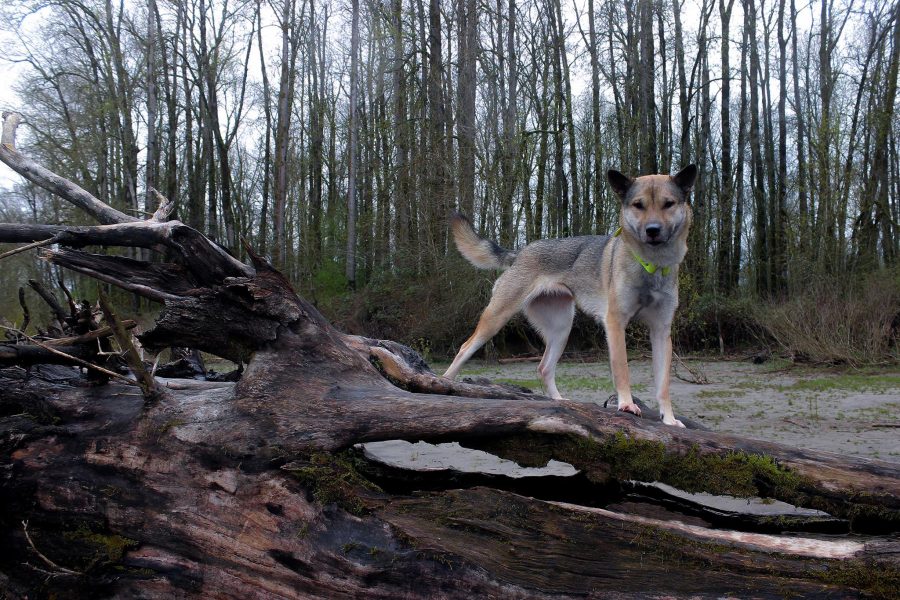
Spend enough time “in” dogs, and you come to learn that in the dog world, there is glancing at headlines having to do with dogs, reading about dog breeds, and doing research on dog breeds. There is another step above research, and it to be the deep diving into the genetics of dog breeds. If we’re successful in this post, we’ll have dipped a toe-tip into all of the above. Temper your expectations. It’s a just the tip.
Far from being a type of fungus or dinosaur, “haplotypes” are a group of genes (we all have genes, don’t be scared) or a set of DNA variations in an organism that are inherited from a single parent. They are located close together on a chromosome, and tend to be inherited together as a group. For dog nerds, a haplotype” is a generic term for a single copy of a dog’s diploid genotype (haploid = 1 copy, diploid = 2 copies). Dogs have two copies of their non-sex chromosome, so parent A’s copy and parent B’s copy are each inherited as a single unit, and each one is referred to as a haplotype.
Got that?
Haplotypes are important because they can help identify genetic versions that are associated with diseases or other traits. Remember, now, that because the variants in a haplotype are inherited together, finding a haplotype associated with a disease can point to the causal genetic region even if the individual variants have small effects. Eureka.
Haplotypes can also be used to trace ancestry and population history particularly when certain ones are specific to particular ancestral populations or geographic regions. In dogs, analyzing the mitochondrial DNA haplotypes of dogs can provide insights into their genetic diversity, and the relationships within and between different dog populations and breeds. Some haplotypes, for example, might be more prevalent in specific dog breeds, and that can reflect their genetic history and serve as helpful references for breed studies and genetic research. For the breeder, it’s helpful to know if, say, certain dog leukocyte antigen haplotypes are associated with certain diseases. Is there an increased or decreased risk of developing something like diabetes mellitus? Knowing the DLA haplotype profiles of different breeds can help identify what the genetic risk factors are for diseases known to occur in a breed.
Why?
Check your “dog lover pulse” if you wouldn’t find exciting the idea that the breed you feed and love every day has a rare and ancient genetic lineage that has been preserved over centuries. For the breeder of this rare breed, knowing this haplotype information is important to maintaining the breed’s genetic diversity and integrity.
And it makes us giggle just a little. Why?
Who among our readers hasn’t known someone who was told by older siblings that they were found on a street corner? Only because Mom and Dad felt pity were they taken in to become the newest brother or sister. Over time, the tall tale becomes apparent for being mere teasing – but every so often, something will happen to make that “street waif” wonder. They discover they are an entirely different blood type than other family members. They are the only redhead in a family of brunettes. You get the idea.
The Kishu Ken also comes with a historical “tall tale” that might make owners think, “hmmmmmm.”
As the legend goes, at a time the earth was still smoldering from volcanic activity, a boar hunter living in the mountains of Japan’s Kii Peninsula came upon an injured Honshu wolf. Also known as the Japanese wolf, it is now extinct, but it once roamed the Japanese islands of Honshu, Shikoku, and Kyushu.
As hunters respect other good hunters, this human hunter felt compassion for this hurt female, and took it upon himself to nurse her back to health. He fed her, warmed her, read the classics to her, and in time, she was well enough to go home. For his kindness, the wolf offered the hunter a gift, but all he wanted was one of her pups to keep him company and help him hunt.
Months and months passed, and the hunter assumed the wolf had forgotten her promise, but one spring day, he found a wolf cub sitting at his door. He named her Valerie and they became a formidable hunting team.
We mention this because not only is the Kishu Ken considered a premier boar hunting dog, but because the genetic testing that revealed a connection to the New Guinea Singing Dog and Australian Dingo takes a twist. Both the New Guinea Singing Dog and Australian Dingo were found to be related to the Honshu wolf.
Do you hear yourself saying, “Hmmmmmm?”
Some Kishu Ken owners have found traits in their dogs that they swear are “wolf blood.”
Hmmmmmm…
Photo of “Nami,” a Kishu Ken shared by CJ McCammon
